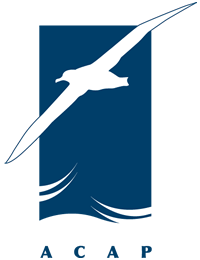 This graphical abstract shows how DNA sequencing can help discriminate between seabird species caught as bycatch, compared to visual methods of identification. Different parts of seabirds' genomes have sequences that are specific to each species, which can be targeted with the right DNA markers. Graphical abstract illustrated by Stacey McCormack [Visual Knowledge Pty Ltd] and supplied by Andrea Polanowski
This graphical abstract shows how DNA sequencing can help discriminate between seabird species caught as bycatch, compared to visual methods of identification. Different parts of seabirds' genomes have sequences that are specific to each species, which can be targeted with the right DNA markers. Graphical abstract illustrated by Stacey McCormack [Visual Knowledge Pty Ltd] and supplied by Andrea Polanowski
Andrea Polanowski (Australian Antarctic Division, Department of Climate Change, Energy, The Environment and Water, Australia) and colleagues have published open access in the journal Ecology and Evolution on the use of DNA in identifying seabird bycatch.
The paper’s abstract follows:
“Incidental mortality in fisheries is a major driver of population declines for albatrosses and petrels globally. However, accurate identification of species can be difficult due to the poor condition of bycaught birds and/or visual similarities between closely related species. We assessed three genetic markers for their ability to distinguish the 36 albatross and petrel species listed in Annex 1 to the Agreement on the Conservation of Albatrosses and Petrels (ACAP) and in Australia's Threat Abatement Plan (TAP) for the bycatch of seabirds during oceanic longline fishing operations. We generated 275 new sequences, from 29 species, to improve the coverage of reference databases for these listed species. The combined use of the selected Cytochrome b and Control Region markers enabled the identification of 31 of 36 listed seabirds to species level and four to sister species. One petrel species could not be evaluated as no reference sequences were available. We tested these markers on 59 feathers from bycaught seabirds and compared these to onboard visual identification. We successfully assigned all procellariiforms to species (n = 58), whereas only two seabirds were correctly identified to species visually onboard, highlighting the difficulty of visual species assignment and the need for alternative methods. We assessed the utility of our two chosen markers for the assignment of all procellariiform species, with 74% of species with reference sequences identified to species or sister species level. However, a precautionary approach is needed for application beyond our listed species due to unvalidated reference sequences. The approach described here provides a streamlined framework for the molecular identification of seabird bycatch. This approach is recommended for use in fisheries within and outside Australian waters to improve the resolution of bycatch reporting and to corroborate logbook entries, observer reports and audits of images captured by electronic monitoring systems as well as help inform conservation efforts.”
Reference:
Polanowski, A.M., MacDonald, A.J., Double, M.C., Barrington, J.H.S., Burg, T.M., Wienecke, B. & McInnes, J.C. 2024. The development of DNA markers to resolve uncertainties of seabird bycatch identification from longline fisheries in Australian waters. Ecolology and Evolution 14: e70568.
05 December 2024

 Français
Français  English
English  Español
Español